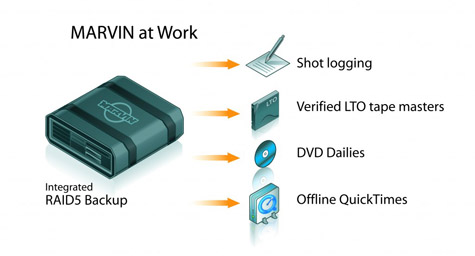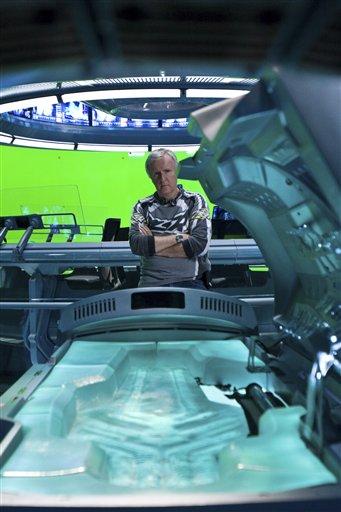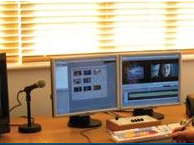The next generation EditShare XStream DI shared storage solutions have been engineered to deliver multiple concurrent streams of 2k and HD DPX as well Quicktime and MXF with codecs such as uncompressed 10 bit, Avid DNxHD and Apple ProRes . Coupled with almost limitless storage capability, EditShare XStream DI has been chosen as the shared storage for the Digital Vision Turbine processing grid at NAB, enabling real-time premium RED decode and realtime motion compensated noise reduction. EditShare XStream series provides a single point of management for the storage range, allowing an entire facility to be connected from ingest to delivery of the final cut.
The newly integrated solution will be demonstrated at NAB 2009 (April 20 to 23 in Las Vegas, NV) on the EditShare stand (SL6420).
“With EditShare XStream, we are bringing the same great media sharing capabilities that Apple and Avid editors have enjoyed over the past years to Digital Vision artists working in Digital Intermediate environments,” comments Andy Liebman, CEO and founder, EditShare. “The flexibility of our technology accommodates both DI and other file based workflows from the same XStream system with tremendous performance and unmatched scalability. Film Master artists will be able to grade in realtime off the XStream. The integration with Turbine ensures that throughput and processing can be scaled to any production requirement. ”
“Digital Vision is always looking at new storage solutions that enable creatives to have more interactivity. What impressed us the most with this product is the way it could handle 20 simultaneous read and write requests from our Turbine grid processor without a single dropped frame on the main workstation,” comments company President, Simon Cuff.
About Digital Vision Solutions
Digital Vision has been the ground breaker and driving force for high end shared storage workflows both in film and broadcast production. All Digital Vision software is delivered SAN ready and can be configured to work with multiple file systems simultaneously, including a mix of realtime and nearline volumes. Caching, proxy creation and render management can all be automated to ensure that operators are focused on creative tasks rather than data management.
EditShare Complete Collaboration
The Storage and XStream Series are part of the EditShare Complete Collaboration line of products which provide shared media and collaborative workflows – from ingest through production to archive. In addition to the Storage Series and XStream Series, the Complete Collaboration line includes EditShare FLOW and EditShare Ark.
Designed for the industry’s leading editing and compositing products from Adobe, Apple, Assimilate, Autodesk, Avid, Digidesign, Digital Vision, and Sony, EditShare storage servers, including the ultra-performance XStream series, allow all connected workstations to capture, access and share in real time a common pool of media files. Regardless of application or platform, source material, work in progress and finished packages are shared and instantly available to all users on the EditShare network. EditShare is also the only solution that provides full Project Sharing among both Apple and Avid editing workgroups. EditShare servers connect via Gigabit or 10 Gigabit ethernet.
FLOW Ingest captures up to four channels of media and associated metadata, storing each channel in up to three formats simultaneously and outputting a proxy for fast retrieval. No background transcoding is required and files are available immediately for editing. EditShare’s unique Universal Media File technology allows ingested media to be shared and used by editors working on both Avid and Apple editing applications.
FLOW Browse simplifies media cataloging, search and retrieval within EditShare shared storage environments. Users can quickly locate media among hundreds of thousands of clips on the EditShare media spaces. From FLOW Browse, users can update metadata, log clips, and drag and drop media to Avid and FCP bins.
FLOW Ingest and Browse are fully integrated with EditShare’s Storage Series as well as the ultra-performance XStream Series for high-volume, high-demand environments.
EditShare Ark provides a full range of very cost effective, disk-based solutions for backup, mirroring and archiving needs. While Ark systems are not generally usable for realtime editing, in a crisis situation where something has happened to a facility’s main EditShare storage, Ark Disk Based Storage can be “activated” and used to complete mission critical work while the primary storage is repaired.
Press Contact
Janice Dolan
Zazil Media Group
Email [email protected]
Tel: +1 (617) 817-6595.





